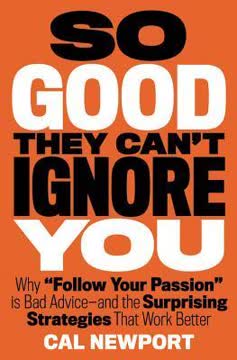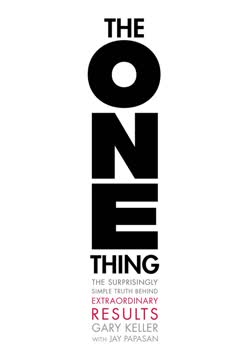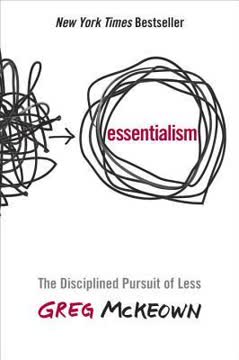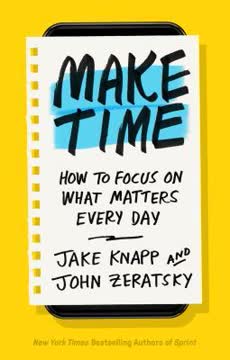重点摘要
1. 选择每日重点,优先考虑最重要的事情
今天的重点是什么?
设定一个明确的目标。 每天早晨,选择一项活动作为你的重点。这可以是一个重要的工作任务、一个个人项目,或者仅仅是你想做的事情。通过主动选择一个焦点,你可以确保将时间花在对你最重要的事情上,而不是被他人的优先事项所左右。
使用三个标准来选择:
- 紧迫性:今天最紧迫的事情是什么?
- 满足感:完成哪项任务会给你带来最大的满足感?
- 快乐:哪项活动会给你带来最多的快乐?
力求将你的重点活动控制在60-90分钟内。这段时间足够让你进入专注状态,而不会感到压倒。将你的重点写下来,以提高完成它的可能性。记住,完美并不是必需的——仅仅选择一个重点就能帮助你将注意力和精力重新引导到真正重要的事情上。
2. 重新设计与科技的关系,以战胜干扰
不要等着科技来归还你的时间。
掌控你的设备。 现代科技旨在让人上瘾和分心。要重新获得专注,你必须主动重新设计与设备和应用的关系。首先,创建一个“无干扰”的手机:
- 删除社交媒体应用、游戏和其他无尽内容的应用
- 移除电子邮件并禁用通知
- 仅保留必要的、不分心的应用
创建干扰的障碍:
- 登出上瘾的网站和应用
- 使用浏览器扩展限制在分心网站上的时间
- 为电子邮件和社交媒体设定特定的使用时间
通过让干扰更难以接触,你减少了对持续意志力的需求。这使你能够将精力集中在真正重要的事情上,而不是浪费在无意识的滚动和对通知的反应上。
3. 通过采纳狩猎采集者的习惯来提升能量
像原始人一样行动,以增强能量。
与进化根源保持一致。 我们的身体和大脑仍然适应祖先的狩猎采集者生活方式。通过将这种生活方式的元素融入现代日常,你可以显著提升能量和专注力。
需要采纳的关键狩猎采集者习惯:
- 经常活动:每天至少走动、拉伸或锻炼20分钟
- 吃真实的食物:专注于全食、未加工的食物,如蔬菜、水果、坚果和瘦肉
- 优先面对面互动:与朋友和家人面对面相处
- 多待在户外:接触自然可以减少压力并改善认知功能
- 在黑暗、安静的环境中睡觉:为更好的休息创造一个洞穴般的卧室
记住,你不需要做出剧烈的改变。向更“原始人”生活方式的小幅度转变可以对你的能量水平和整体健康产生重大影响。
4. 为无尽内容和忙碌文化创建障碍
战胜干扰的最佳方法是让反应变得更困难。
识别并限制无尽内容。 无尽内容是指那些拥有无穷无尽算法内容的应用和服务,可能会吞噬你数小时的时间。常见的例子包括社交媒体、新闻网站和视频流媒体平台。要重新获得控制:
- 从手机中移除无尽内容应用
- 在专注工作时使用网站屏蔽工具
- 为使用这些服务设定具体的时间限制
抵制忙碌文化。 忙碌文化是指始终保持高效和响应的文化压力。为了避免被卷入其中:
- 安排你的重点活动并保护这段时间
- 将电子邮件和小任务批量处理
- 学会对非必要的承诺说不
- 对非紧急消息反应缓慢
通过为无尽内容和忙碌文化创建障碍,你可以更容易地专注于真正重要的事情,避免陷入反应性行为模式。
5. 优化你的环境以提高专注力和生产力
关上门是你向世界和自己表明你在认真对待的方式。
为专注设计你的空间。 你的物理环境在你专注能力中扮演着至关重要的角色。做出有意的改变以支持深度工作:
- 创建一个专用工作空间:即使只是房间的一个角落
- 移除可见的干扰:清理杂物,收起设备
- 使用视觉提示:关上门或使用降噪耳机来发出“请勿打扰”的信号
调整你的数字环境:
- 清理你的电脑桌面
- 关闭不必要的浏览器标签和应用
- 在设备上使用专注模式或全屏功能
优化能量:
- 确保适当的照明,最好能接触到自然光
- 保持舒适的温度
- 考虑使用站立式办公桌或活跃坐姿选项
通过精心设计你的物理和数字环境,你可以创造一个有利于持续专注和生产力的氛围。
6. 战略性地使用咖啡因以维持稳定的能量
在饮用咖啡因之前先醒来。
合理安排咖啡因摄入。 咖啡因可以是维持能量和专注的强大工具,但很容易陷入不理想的习惯。为了更有策略地使用咖啡因:
- 延迟你的第一杯:在醒来后等待60-90分钟,以让自然皮质醇水平达到峰值
- 避免下午的能量崩溃:在睡前8-10小时内饮用最后一杯含咖啡因的饮料
- 考虑低剂量选项:尝试绿茶以获得更平衡的能量提升
尝试咖啡因策略:
- 咖啡因小憩:喝咖啡后小睡15-20分钟,以获得强效充电
- 咖啡因禁食:偶尔跳过咖啡因以重置耐受性
- 与你的重点活动搭配:将咖啡因摄入时间与最重要的任务相结合
记住,每个人对咖啡因的敏感度不同。注意它对你的能量和睡眠的影响,并相应调整。目标是将咖啡因作为支持你专注和生产力的工具,而不是用来强撑疲惫的拐杖。
7. 每日反思,通过小实验微调你的方法
你是一个样本,只有你的结果才是真正重要的。
跟踪你的进展。 每天结束时,花几分钟反思你实施“Make Time”策略的效果。问问自己:
- 我是否为我的重点活动留出了时间?
- 我今天的能量水平如何?
- 哪些策略有效?哪些无效?
- 今天我感恩什么?
拥抱实验精神。 将“Make Time”视为一系列个人实验。并非每个策略对每个人都有效,因此找到最适合你的方法至关重要。
- 一次尝试一个新策略
- 给每个实验至少几天的时间
- 在观察中要具体
- 根据你的结果进行调整和优化
通过持续反思和实验,你将发展出一个个性化的系统,帮助你为最重要的事情腾出时间。记住,小的转变可以随着时间的推移产生巨大的结果。目标不是完美,而是不断改善你管理时间、精力和注意力的方式。
最后更新日期:
FAQ
What's "Make Time: How to Focus on What Matters Every Day" about?
- Focus on Priorities: "Make Time" by Jake Knapp and John Zeratsky is about creating more time in your day for the things you care about by focusing on your priorities.
- Framework for Time Management: The book introduces a framework that consists of four steps: Highlight, Laser, Energize, and Reflect, which are repeated daily.
- Not About Productivity: Unlike traditional productivity books, it emphasizes making time for meaningful activities rather than just getting more done.
- Overcoming Distractions: It addresses the challenges of modern distractions like technology and busy schedules, offering strategies to overcome them.
Why should I read "Make Time"?
- Practical Strategies: The book provides practical, actionable strategies to help you focus on what truly matters in your life.
- Relatable Authors: Written by former tech industry professionals, the authors share relatable experiences and insights into managing time effectively.
- Improved Well-being: By following the book's framework, readers can expect to feel less busy, more focused, and enjoy their daily lives more.
- Customizable Approach: The tactics are designed to be flexible and adaptable to individual lifestyles, making it suitable for anyone looking to improve their time management.
What are the key takeaways of "Make Time"?
- Highlight Your Day: Start each day by choosing a single activity to prioritize, ensuring you focus on what matters most.
- Beat Distractions: Use tactics to minimize distractions from technology and other interruptions to maintain focus.
- Energize Your Body: Take care of your body to recharge your brain, enhancing your ability to focus and be present.
- Reflect and Adjust: Regularly reflect on your day to identify what worked and what didn’t, allowing you to fine-tune your approach.
How does the "Highlight" step work in "Make Time"?
- Choose a Focal Point: Begin each day by selecting a single activity or task that will be the highlight of your day.
- Criteria for Selection: Use urgency, satisfaction, or joy as criteria to choose your highlight, ensuring it aligns with your priorities.
- Commitment to Completion: Make a commitment to complete your highlight, even if it requires breaking it into smaller tasks.
- Proactive Mindset: This step encourages a proactive approach to your day, helping you focus on what truly matters.
What is the "Laser" step in "Make Time"?
- Focus on the Present: Laser mode is about focusing your attention like a laser beam on your highlight, minimizing distractions.
- Create Barriers: Implement tactics to create barriers against distractions, such as logging out of social media or turning off notifications.
- Redesign Technology Use: Adjust how you use technology to prevent it from interrupting your focus and attention.
- Quality Time: By staying in Laser mode, you ensure higher quality time spent on your highlight, leading to better outcomes.
How can I "Energize" according to "Make Time"?
- Physical Activity: Incorporate daily exercise, even if it's just a short walk, to boost your energy levels.
- Healthy Eating: Focus on eating real, unprocessed foods to maintain steady energy throughout the day.
- Caffeine Management: Use caffeine strategically to avoid energy crashes and maintain focus.
- Rest and Quiet: Ensure you get enough sleep and take breaks from screens to recharge your brain.
What does the "Reflect" step involve in "Make Time"?
- Daily Reflection: At the end of each day, reflect on whether you made time for your highlight and how well you focused.
- Track Your Energy: Note your energy levels and the effectiveness of the tactics you used.
- Adjust Tactics: Use your reflections to adjust and improve your approach, tailoring the system to your unique needs.
- Gratitude Practice: Incorporate gratitude into your reflections to maintain a positive outlook and reinforce successful habits.
What are some of the best quotes from "Make Time" and what do they mean?
- "Most of Our Time Is Spent by Default": This quote highlights how much of our time is consumed by automatic, unintentional activities, emphasizing the need for intentionality.
- "The antidote to exhaustion is not necessarily rest...The antidote to exhaustion is wholeheartedness": This suggests that engaging fully and passionately in activities can be more rejuvenating than rest alone.
- "You can design your time by choosing where you direct your attention": This underscores the book's central theme of intentional time management by focusing on priorities.
- "It’s not about saving time. It’s about making time for what matters": This encapsulates the book's philosophy of prioritizing meaningful activities over mere efficiency.
How do the authors suggest dealing with email in "Make Time"?
- End-of-Day Email: Deal with email at the end of the day to use prime hours for more important work.
- Scheduled Email Time: Schedule specific times for checking email to prevent it from interrupting your focus.
- Slow Response: Be slow to respond to emails to prioritize your own tasks over others' demands.
- Reset Expectations: Communicate your email habits to manage others' expectations and reduce pressure for immediate responses.
What is the "Busy Bandwagon" and "Infinity Pools" in "Make Time"?
- Busy Bandwagon: Refers to the cultural norm of constant busyness, where people fill their time with endless tasks and meetings.
- Infinity Pools: Describes apps and sources of endless content, like social media and news, that can consume unlimited time.
- Default Behaviors: Both concepts highlight default behaviors that lead to distraction and stress, preventing focus on meaningful activities.
- Breaking the Cycle: The book provides strategies to break free from these defaults and regain control over your time and attention.
How can I implement "Make Time" in my daily life?
- Start Small: Begin by choosing one tactic from each step—Highlight, Laser, Energize, and Reflect—and gradually incorporate more.
- Customize Tactics: Adapt the tactics to fit your lifestyle and preferences, ensuring they are practical and sustainable.
- Track Progress: Use the reflection step to track your progress and make adjustments as needed.
- Be Patient: Allow time for the new habits to take root and be open to experimenting with different approaches.
What are some practical tips from "Make Time" for reducing distractions?
- Distraction-Free Phone: Remove social media and email apps from your phone to reduce temptation.
- Log Out: Log out of distracting websites and apps to create a barrier to access.
- Nix Notifications: Turn off non-essential notifications to minimize interruptions.
- Clear Homescreen: Keep your phone's homescreen blank to avoid visual triggers for distraction.
评论
《高效时间管理》因其在生产力和时间管理方面的实用建议而获得普遍好评。读者们欣赏书中简单的框架、可操作的技巧以及引人入胜的写作风格。许多人发现这本书在优先处理重要任务和减少干扰(尤其是来自科技的干扰)方面非常有用。尽管一些评论者指出书中的观点并非完全新颖,但大多数人一致认为,这本书以易于理解和激励人心的方式呈现了熟悉的概念。一些读者特别重视作者对个人实验的强调,以及寻找最适合个人生活方式的方法。
Similar Books













